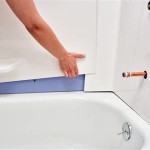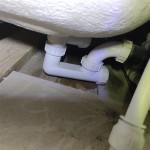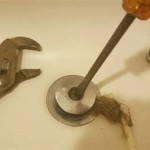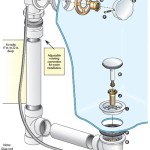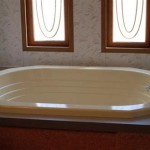Kohler Bathtub Faucet Replacement: A Comprehensive Guide
Replacing a Kohler bathtub faucet can seem like a daunting task, but with the right tools, preparation, and knowledge, it's a manageable project for many homeowners. This guide provides a detailed overview of the process, covering everything from identifying the correct replacement faucet to the step-by-step installation procedure. Understanding the details involved will help ensure a successful and leak-free installation.
Kohler is a well-known brand with a reputation for quality and design. Their bathtub faucets come in a variety of styles, finishes, and configurations, so selecting the appropriate replacement is crucial. A mismatched faucet not only looks out of place but may also create plumbing compatibility issues.
Before embarking on the replacement, it is essential to assess the existing faucet and plumbing setup. This involves identifying the faucet type, measuring dimensions, and determining the pipe configuration. The information gathered will inform the selection of the replacement faucet and any necessary adapters or fittings.
Identifying Your Kohler Bathtub Faucet Type
The first step in replacing a Kohler bathtub faucet is accurately identifying the existing faucet type. Bathtub faucets generally fall into several categories, each requiring a different replacement strategy. Common types include:
Two-Handle Faucets: These faucets have separate handles for hot and cold water. They can be further categorized by their mounting style which includes deck-mounted (mounted on the tub rim), wall-mounted (mounted on the wall above the tub), and widespread (handles are separate from the spout). Determine if these handles control separate quarter-turn ceramic cartridges, compression valves, or another less-common mechanism. Knowing this valve type is critical for choosing either a complete faucet replacement or simply replacing the internal valve components.
Single-Handle Faucets: These faucets use a single handle to control both water temperature and flow. They often employ a cartridge or ball valve mechanism. Single-handle faucets are commonly found in modern bathrooms and are relatively straightforward to replace.
Diverter Faucets: Diverter faucets incorporate a mechanism to switch the water flow between the bathtub spout and the showerhead. These can be either two-handle or single-handle designs. When replacing a diverter faucet, ensure the replacement faucet has a compatible diverter valve and mechanism.
Roman Tub Faucets: These faucets are typically mounted on the deck surrounding a freestanding bathtub. They often feature separate handles and a spout and can be more complex to replace due to their remote valve locations.
Once the faucet type is identified and documented, take close up pictures of the faucet, handles, spout, and any identifying markings. This will be helpful when searching for a replacement faucet online or at a plumbing supply store.
Preparing for the Replacement
Proper preparation is crucial to a successful Kohler bathtub faucet replacement. This involves gathering the necessary tools and materials, as well as taking safety precautions to prevent injury or damage.
Tools and Materials: The following tools are generally required for replacing a bathtub faucet:
- Adjustable wrench
- Basin wrench (for reaching hard-to-access connections)
- Screwdrivers (Phillips and flathead)
- Pliers
- Plumber's tape (Teflon tape)
- Penetrating oil (for loosening stubborn connections)
- Bucket and towels (to catch water)
- Safety glasses
- Work gloves
- New Kohler Bathtub Faucet
- Replacement supply lines (optional, but recommended)
- Fitting adapters (if needed)
Shutting Off the Water Supply: Before starting any plumbing work, it is imperative to shut off the water supply to the bathtub faucet. Locate the shut-off valves for both the hot and cold water lines leading to the faucet. These valves are typically located under the sink, in the basement, or near the water heater. If individual shut-off valves are not present, the main water supply to the house must be turned off.
Draining the Pipes: Once the water supply is shut off, turn on the existing faucet to relieve any remaining pressure in the pipes. Allow the water to drain completely. Place a bucket underneath the faucet connections to catch any residual water.
Protecting the Bathtub and Surroundings: To prevent scratches or damage to the bathtub and surrounding surfaces, cover them with drop cloths or old towels. This will also help to contain any debris or water that may spill during the replacement process.
Step-by-Step Faucet Removal and Installation
With the preparation complete, proceed to the removal of the old faucet and the installation of the new Kohler bathtub faucet. The following steps outline the general process, but specific procedures may vary depending on the faucet type and installation configuration.
Removing the Old Faucet:
1. Disconnecting the Water Supply Lines: Using an adjustable wrench or basin wrench, carefully disconnect the water supply lines from the existing faucet. If the connections are corroded or difficult to loosen, apply penetrating oil and allow it to soak for a few minutes. Use caution to avoid damaging the pipes or fittings.
2. Removing the Faucet Handles and Spout: Depending on the faucet type, the handles and spout may be held in place by screws, nuts, or retaining clips. Remove these fasteners carefully and set them aside. If the handles are stuck, try tapping them gently with a rubber mallet or applying penetrating oil.
3. Removing the Faucet Body: Once the handles and spout are removed, the faucet body can be detached from the bathtub or wall. This may involve unscrewing mounting nuts or bolts located underneath the bathtub or behind the wall. Use a basin wrench or adjustable wrench to access these fasteners. If the faucet body is caulked to the bathtub or wall, use a utility knife to carefully cut through the caulk before attempting to remove the faucet.
4. Cleaning the Mounting Surface: After removing the old faucet, thoroughly clean the mounting surface to remove any dirt, debris, or old caulk. Use a scraper or putty knife to remove stubborn residue. This will ensure a proper seal for the new faucet.
Installing the New Faucet:
1. Preparing the New Faucet: Carefully unpack the new Kohler bathtub faucet and inspect all components for damage. Read the manufacturer's instructions thoroughly before beginning the installation. Apply plumber's tape to the threads of all pipe connections to ensure a watertight seal.
2. Installing the Faucet Body: Position the faucet body onto the mounting surface and secure it with the appropriate mounting hardware. Tighten the nuts or bolts evenly to avoid warping or damaging the faucet. Ensure the faucet is properly aligned and level.
3. Installing the Handles and Spout: Attach the handles and spout to the faucet body, following the manufacturer's instructions. Tighten the screws or nuts securely, but avoid over-tightening, which could damage the faucet components. If the faucet has decorative trim rings or escutcheons, install them at this time.
4. Connecting the Water Supply Lines: Connect the water supply lines to the faucet body, using new supply lines if possible. Tighten the connections securely with an adjustable wrench, but avoid over-tightening. Ensure the supply lines are not kinked or twisted. If necessary, use fitting adapters to ensure proper connections.
5. Testing for Leaks: Slowly turn on the water supply to the faucet and check for leaks at all connections. If leaks are present, tighten the connections slightly or apply additional plumber's tape. If leaks persist, disconnect the connections and inspect the threads for damage. Replace any damaged components as necessary.
6. Caulking the Faucet: Apply a bead of caulk around the base of the faucet where it meets the bathtub or wall. This will prevent water from seeping behind the faucet and causing damage. Use a high-quality, mold-resistant caulk and smooth it with a wet finger.
7. Checking Diverter Function (if applicable): If the faucet has a diverter valve, test its function by switching between the bathtub spout and the showerhead. Ensure the diverter valve operates smoothly and that there are no leaks.
Troubleshooting Common Problems:
Leaks: Leaks are a common problem after replacing a bathtub faucet. They can occur at any connection point, including the supply lines, faucet body, handles, and spout. To troubleshoot leaks, first identify the source of the leak. Tighten the connections slightly or apply additional plumber's tape. If the leak persists, disconnect the connection and inspect the threads for damage. Replace any damaged components as necessary. In some cases, the leak may be caused by a faulty cartridge or valve. If this is the case, replace the cartridge or valve.
Low Water Pressure: Low water pressure can be caused by several factors, including clogged supply lines, a faulty cartridge, or a restricted aerator. To troubleshoot low water pressure, first check the supply lines for kinks or obstructions. Clean or replace the supply lines if necessary. If the supply lines are clear, remove the aerator from the spout and clean it. If the water pressure is still low, replace the cartridge.
No Hot or Cold Water: If no hot or cold water is flowing from the faucet, the shut-off valves may not be fully open or the water heater may not be functioning properly. Ensure the shut-off valves are fully open. If the shut-off valves are open and there is still no hot water, check the water heater to ensure it is functioning properly.
Dripping Faucet: A dripping faucet is often caused by a worn or damaged cartridge. Replace the cartridge to stop the dripping. Ensure the correct replacement cartridge is purchased.

Kohler Plastic Tub Shower Repair Kit Most Rite Temp Valves Trim Rgp77759 At Com

Lincoln S Lin111872 3 Handle Valve Rebuild Kit For Kohler Valvet Faucets In Polished Chrome

Replace Diverter Bathtub Spout Kohler K Gp85556 Cp With Slip Fit Connection

Rebuild Kit For 1950 S Vintage Kohler 3 Handle Tub Shower Valves

Lincoln S Tub And Shower Rebuild Kit For Kohler Trend 2 Handle Faucets 111864 The Home Depot

Factory Direct Plumbing Supply Replacement Kohler 3 Valve Tub Shower Rebuild Kit P021 2103

Standard Retrofit Porcelain Handle Tub Shower Kit Dea Bathroom Machineries

Lincoln S Lin111864 2 Handle Valve Rebuild Kit For Kohler Trend Faucets In Polished Chrome

Slip On Diverter Tub Spout Compatible With Kohler Gp85556 Bathroom Shower Bathtub Faucet Replacement Fits 1 2 Copper Water Tube 5 32 Hex Wrench Included Oil Rubbed Broe Com

Replacement Kohler Valvet Kit 2 Valve Fits Triton Ii Alt
Related Posts

